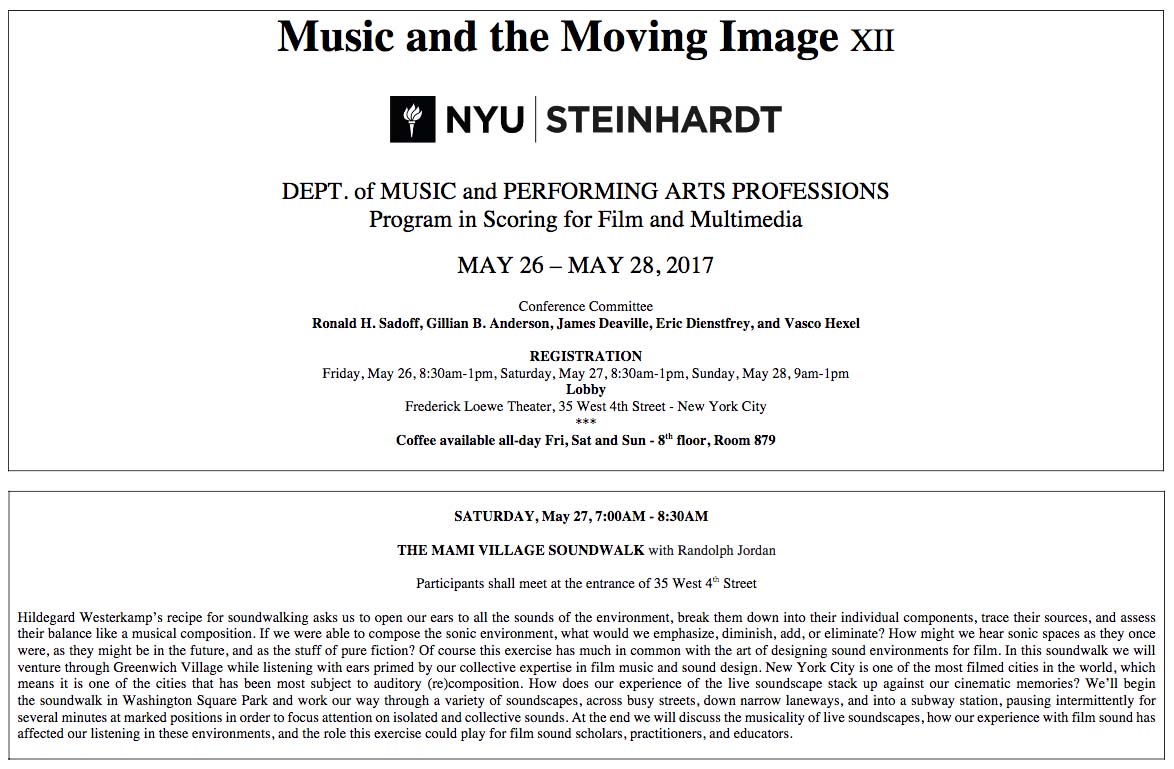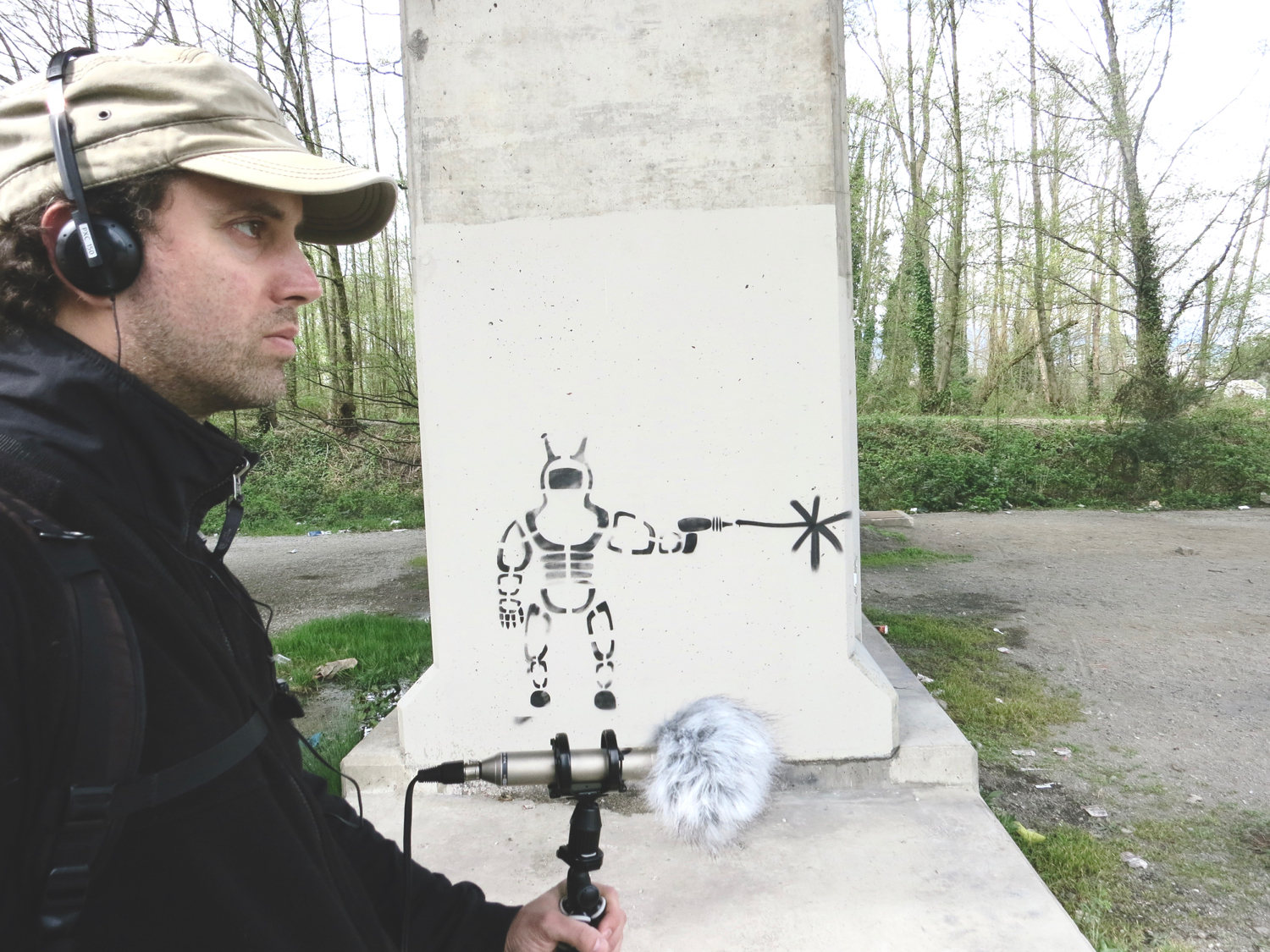Soundwalk and paper for the Music and the Moving Image conference at NYU, May 26-28th 2017
I will be leading the inaugural MaMI Village Soundwalk at this year’s Music and the Moving Image conference at New York University. The walk will be geared especially towards applying our skills as scholars of film sound to the art of listening in real-world environments in order to discover how each can inform the other. I’ll also be presenting a paper on the use of surround sound to explore cross-cultural communication in Terrence Malick’s The New World.
Soundwalk Abstract:
Hildegard Westerkamp’s recipe for soundwalking asks us to open our ears to all the sounds of the environment, break them down into their individual components, trace their sources, and assess their balance like a musical composition. If we were able to compose the sonic environment, what would we emphasize, diminish, add, or eliminate? How might we hear sonic spaces as they once were, as they might be in the future, and as the stuff of pure fiction? Of course this exercise has much in common with the art of designing sound environments for film. In this soundwalk we will venture through Greenwich Village while listening with ears primed by our collective expertise in film music and sound design. New York City is one of the most filmed cities in the world, which means it is one of the cities that has been most subject to auditory (re)composition. How does our experience of the live soundscape stack up against our cinematic memories? We’ll begin the soundwalk in Washington Square Park and work our way through a variety of soundscapes, across busy streets, down narrow laneways, and into a subway station, pausing intermittently for several minutes at marked positions in order to focus attention on isolated and collective sounds. At the end we will discuss the music ality of live soundscapes, how our experience with film sound has affected our listening in these environments, and the role this exercise could play for film sound scholars, practitioners, and educators.
Paper Abstract:
“Sing the Story of Our Land”: Intersecting Soundways and Contested Spaces in The New World
In this paper I examine Terrence Malick’s The New World (2005) as a form of creative historical research that has much in common with acoustic ecology’s interest in reconstructing and reimagining the soundscapes of the past, an increasingly popular area of investigation in sound studies more generally. Malick stages the tale of John Smith’s 1607 arrival in Virginia with a particularly rich approach to sound design that emphasizes not only authentic period detail but also the multiple subjective perspectives that have led to persistent popular mythologies surrounding this moment of first contact. The film’s soundtrack invites the audience to become immersed in narratives of cross-cultural tension and communication, as well as the problems of period filmmaking, through the complex staging of sound as a powerful confluence of technological sophistication, contemporary historical research, and aesthetic innovation. Drawing on recent research into the role of sound in the cultures of the English and the Algonquin of the early 17th Century, I situate the editing and mixing strategies of Malick’s sound designer Skip Lievsay (and his extensive use of historical sound archives) in the context of recent work on multi-channel sound technologies and context-based composition in electroacoustic music and acoustic ecology. Ultimately I demonstrate that Malick and Lievsay maximize the technological potential of the day to position their listeners at points of intersection and overlap between often contradictory ways of knowing the worlds their characters inhabit, which, in turn, exposes the artifice of the film’s periodization to reveal historical truths otherwise inaccessible.

